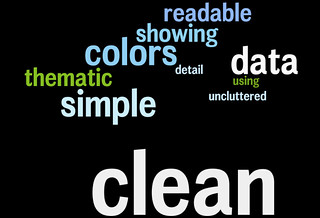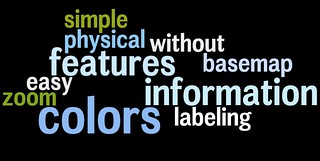 |
| From Stamen, OSM Contributors and National Geographic |
The results are in!
123 helpful participants submitted their thoughts on their favorite basemap services, and without further ado I present some of the results:
Which tiled basemap is most cartographically appealing to you?
Google, National Geographic (served via ESRI), and Mapbox are the winners here, with support for Stamen's options as well. "Other" in this case included OSU's Crinkled Watercolor and OpenCycleMap. Between the Stamen, OSM-Mapnik and Mapbox selections here, tiles based on OpenStreetmap data were ahead of the others. But this is a popularity contest based on looks. Moving on to substance . . .
Which tiled basemap do you use most frequently in your projects?
Google wins on ubiquity. Almost half of the respondent pool uses Google's tiles first; though given the widespread adoption of the API this is not a great surprise. More interesting is that about half of these Google users find a different basemap to be more attractive. Which brings us to . . .
What factors drive the choice of basemap for your projects?
Respondents could choose more than one here, but it's clear that not many balked at the technical challenge or vendor lock-in concerns. Mostly it seems like choices were driven by a balance between aesthetics and quality/detail, with cost and licensing hovering in the back of respondents' minds.
What do you like best about your "cartographic favorite"?
Unpacking these results is best done with a series of [gasp!] word clouds for the top three choices. You might call it a word storm . . .
National Geographic:
Mapbox:
Google:
Interpret these as you will - subjective assessments have a way of bleeding from one choice to another. For instance, it looks like everyone likes the "colors".
Whoa there . . .
This is not a scientific survey. And despite my best efforts to reach out to all the communities involved, it's probably not even terribly representative. But it's interesting to inspect the choices made by this particular group of mappers, and fantastic that so many were willing to share their thoughts. Check out the unvarnished results here - mostly interesting to see the full explanations of what folks like about their preferred aesthetic.
As always, drop me a line if you have any questions or concerns about these results. Thanks to all who participated!












